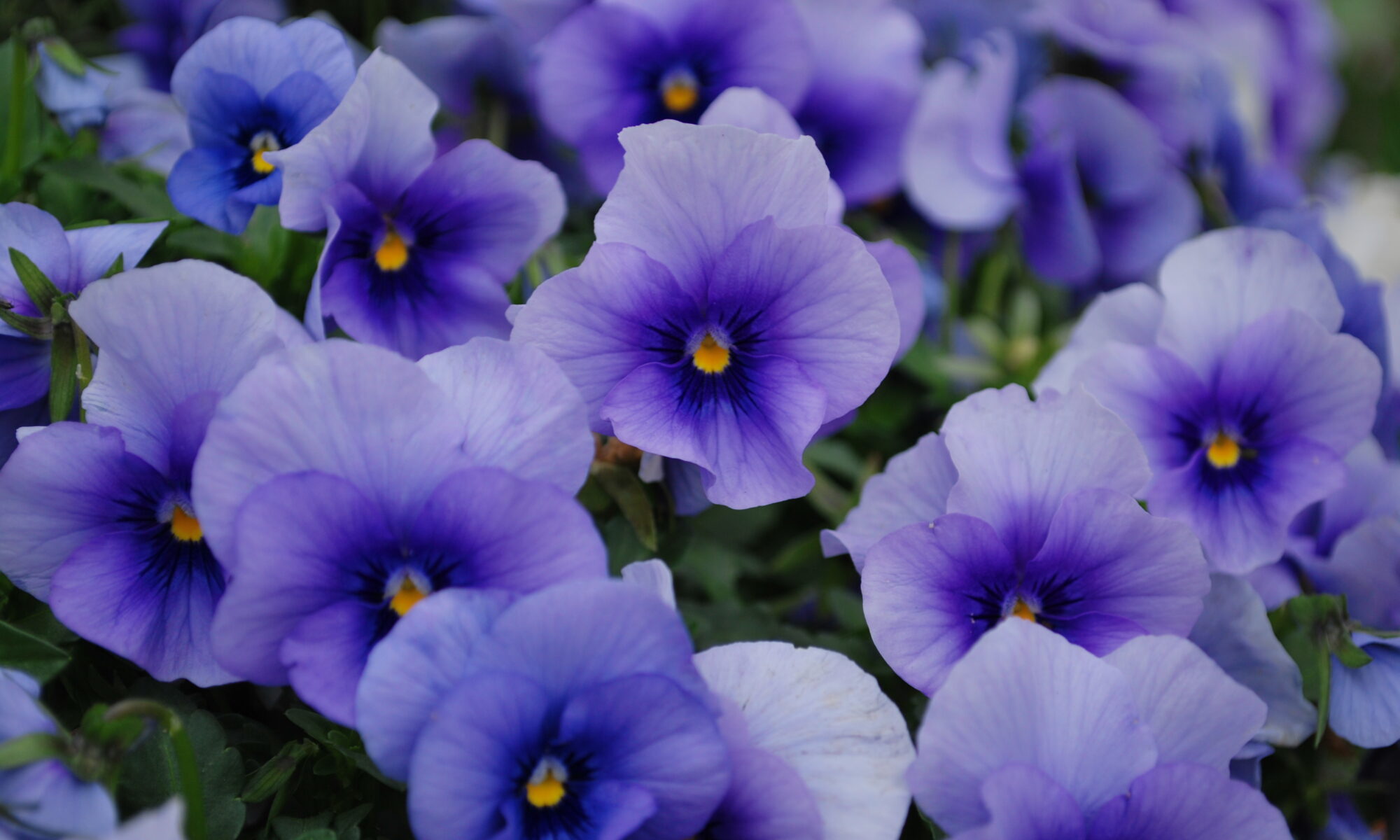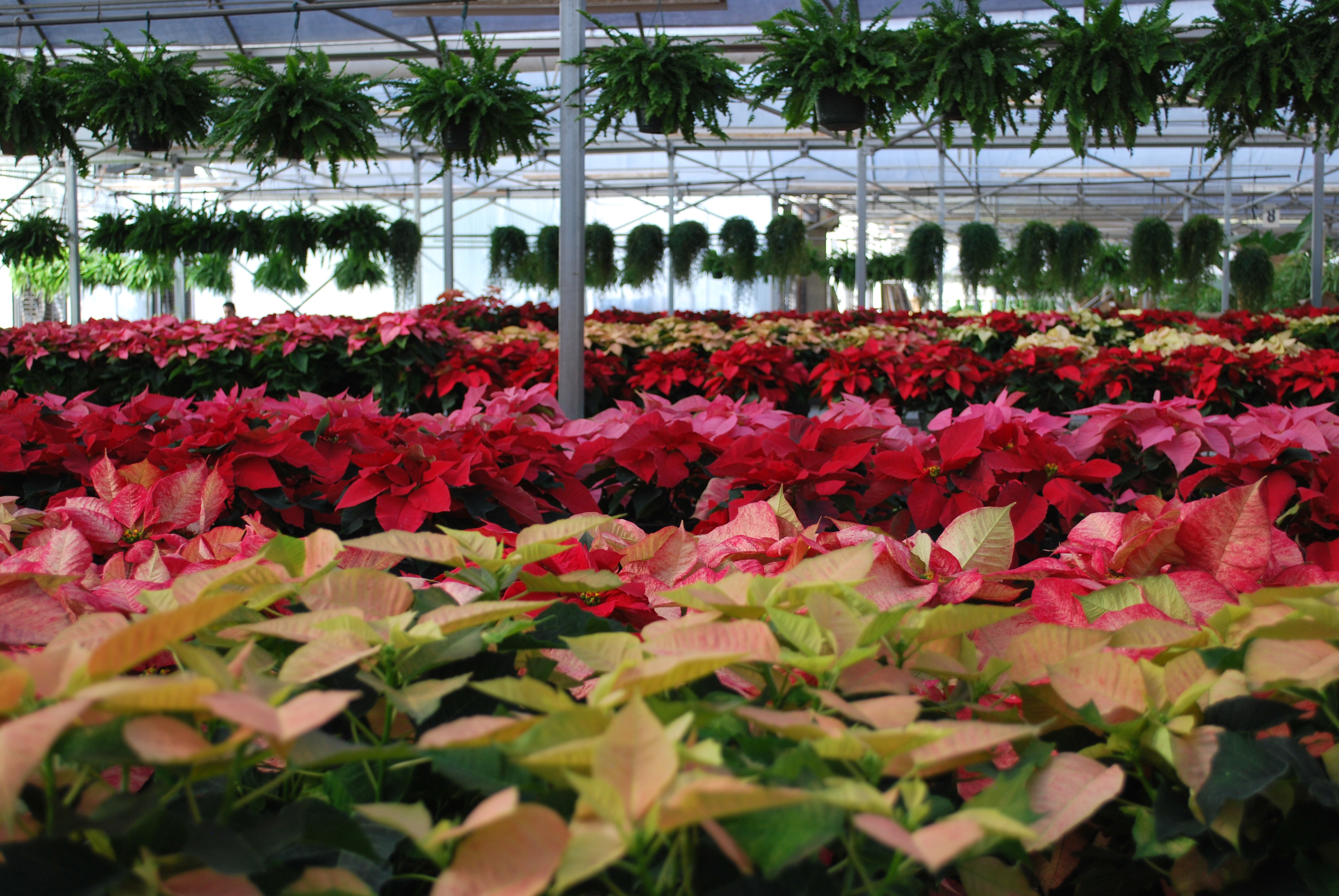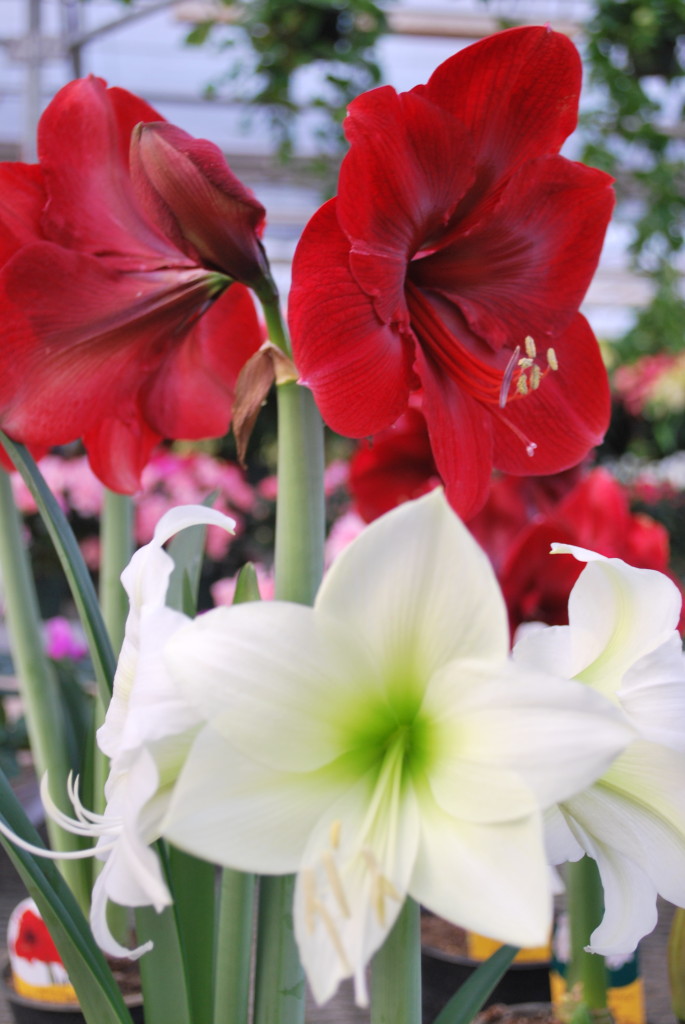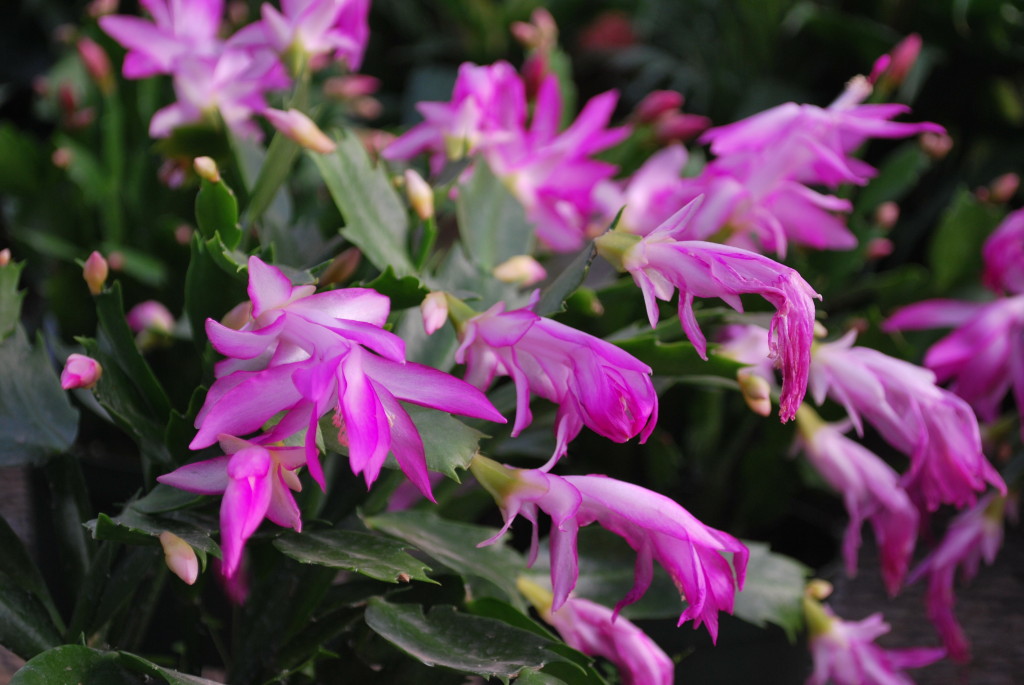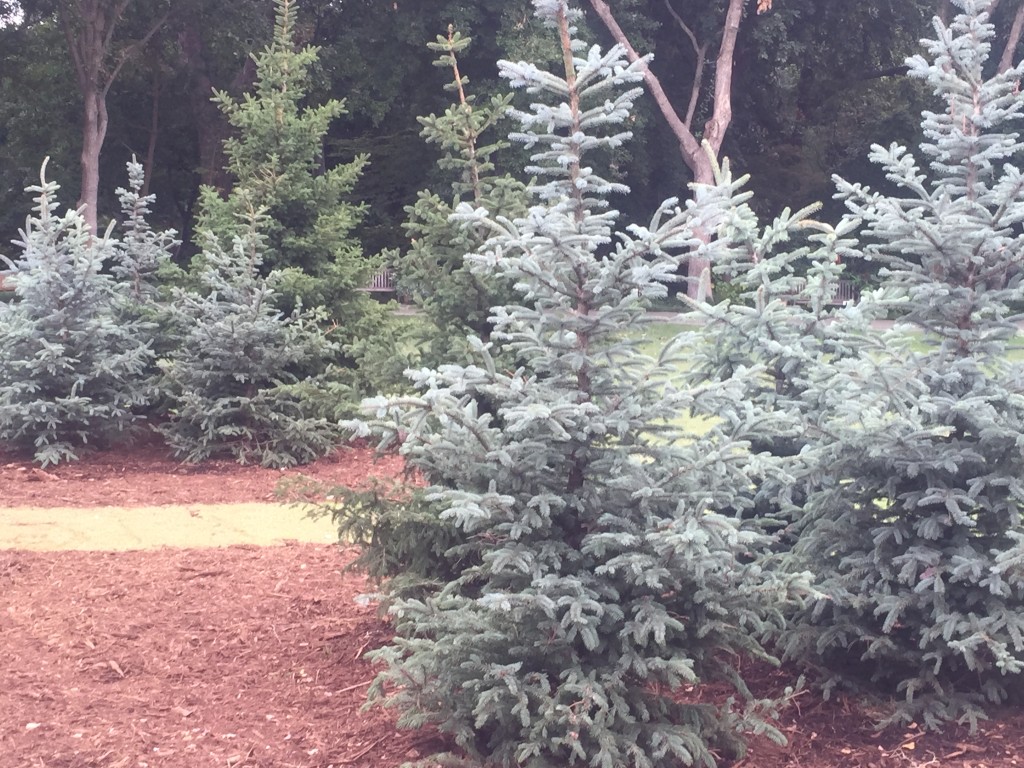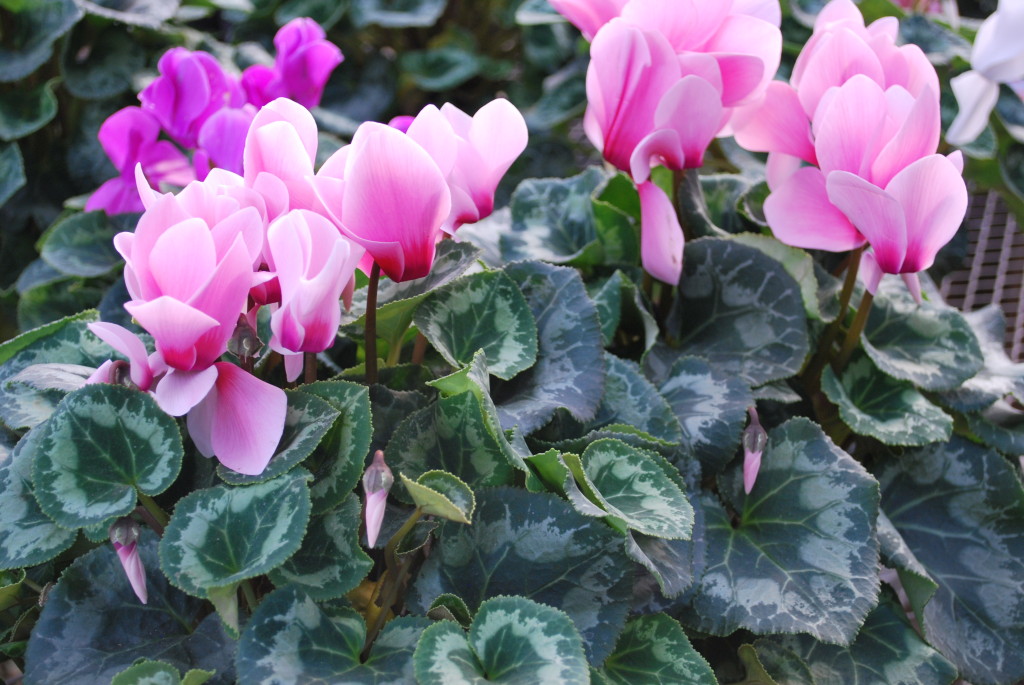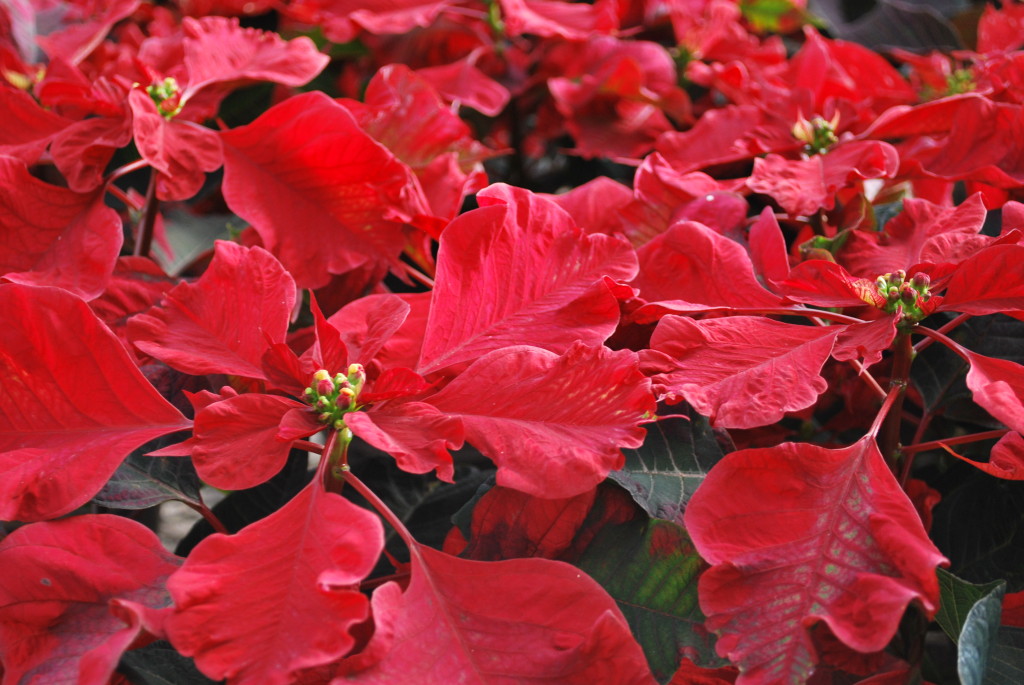By Lesley Fleming, HTR, and Sarah Bayat
Photos by Susan Morgan
Celebrate the festive season with beloved holiday plants. To make the most of these colorful, live plants in the dark days of winter, consider the following tips.
Show-stopping sizes (miniature to large), double blooms, and a color spectrum from pure white or deep red to salmon orange and even stripes, amaryllis feels like a holiday miracle. Watch it grow daily until the blossom opens before your very eyes. Note that the larger the bulb, the larger the flower. Flowering occurs four to eight weeks after planting with the succession of bud openings lasting two weeks. Buds prefer several hours of direct sunlight and temperatures of 75-80 degrees F. Watering is not necessary once bud has cracked. Blossoms can be prolonged by moving flowers out of direct sunlight. Bulb will re-bloom in container or garden bed in milder climates.
Colorful and readily available in the holiday season, Christmas cactus are regarded as easy to maintain houseplants. In preparation for the holidays, the grower will have ensured 12 hours of darkness required for blooming at just the right time. The plant prefers to be in bright indirect light, root-bound in containers and soil drying between watering. Cuttings taken from Christmas cactus can be easily propagated.
Once home, place the fresh cut trunk in an appropriately sized reservoir-type stand that holds water. To prevent drying, place tree away from heat sources, keep tree watered, lower temperatures at night, and use low heat tree lights. Consider recycling the tree. Check out tips on how to care for a live tree with roots here.
Ruffled flowers in white, pink, and red, heart shaped leaves, and blossoms of every size make this plant charming. Avoid direct sunlight, provide good drainage watering from the roots up, and use water soluble fertilizer every two months. For re-blooming, let leaves die back, stop watering, place plant in cool, dark place, and let sit for several months. Then soak soil and resume regular care.
Now available in double blooms and many colors-pink, red, burgundy, yellow, white and even marbled colors, poinsettias are popular because they thrive for long periods of time with minimal care. They prefer temperatures of 70-80 and direct sunlight, but no drafts or sitting water. Poinsettias are not poisonous but the milky sap may irritate skin. Read about growing poinsettias outdoors here.
Authors Lesley Fleming and Sarah Bayat combine their talents for this series. Lesley is a registered horticultural therapist who uses holiday plants for therapeutic activities. Sarah is creative director of Floris Flowers Co.
This is the second in a series of four articles sharing tips on seasonal plants. The third article will offer tips for spring bulbs.
